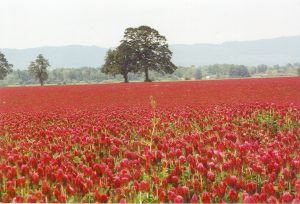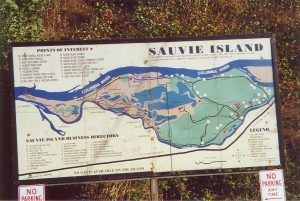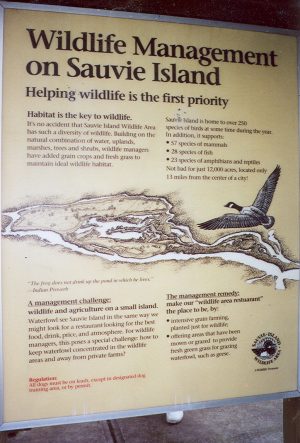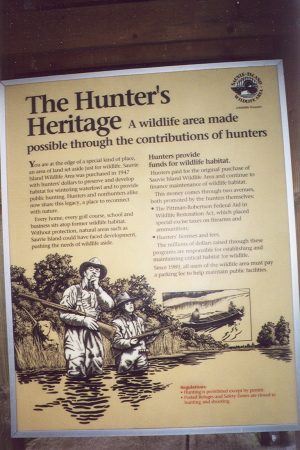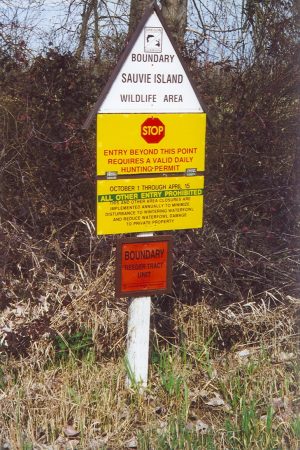There’s frogs inside my socks
Your mama, she’s a-hidin’
Inside the icebox
Your daddy walks in wearin’
A Napoleon Bonaparte mask
Then you ask why I don’t live here
Honey, do you have to ask?
~Bob Dylan
Woke up this morning, went to the shower, and found I was sharing it with a tiny green tree frog. I captured him in the soap dish so he wouldn’t get parboiled by the hot water, took him outside, and set him free. And you ask why I live here …
* * *
Sitting outside this early morning, the fog was so thick I couldn’t see the tops of the trees. It took me a while to realize that the sound of honking geese I was hearing was not coming from the nearby pond, but from overhead. I could hear them off to my right, then overhead, and then off to my left. Other than the honking and an occasional whitish packet of goose dookey, I’d have had no idea they were up there.
So then it strikes me: If I can’t see them, they can’t see the ground. This is an Instrument Flight Rules day if ever there was one. Do they have some sort of flight plan? Can the leader see where he’s going, or is he like many of our own leaders, just taking us all deeper into the fog?
* * *
Yesterday I saw a robin with a worm. I must have seen a thousand cartoons showing a robin trying to pull a worm out of the ground. This one already had the worm out, but when he saw me he got startled. He bit the worm in half and flew off about twenty feet.
But the robins around here aren’t shy. This one REALLY wanted the rest of that worm. He eyed me for a few minutes, then hopped five feet closer. Once more he checked me out. Five feet closer. Then he hopped back to the half worm and picked it up. He cut that half in half, swallowed the first quarter, then the second, never taking his eyes off me. A robin with an attitude.
* * *
Several of you asked what became of the FREE HOT SAUCE I offered in my moving sale ad. Well, I began Friday with over 200 bottles of hot sauce, no two the same. By Sunday evening I had only a dozen bottles to give away. Not having time to follow the strict EPA guidelines for hazardous substances, I tossed them in the dumpster.
The next week, gastroenterological clinics reported a fourfold rise in admissions in the Portland area. Scientists confessed they were baffled.
* * *
We’ve put up two bird feeders out here. One is full of bird seed and is supposed to attract songbirds, and the other is a hummingbird feeder.
The only species of hummer that is commonly seen in Western Oregon is the rufous hummingbird. In fact, the rufous spends its summers in Alaska. For several days we had seen this female rufous buzzing around a tree near us that is bursting with pink blooms. So we set up the feeder and filled it with red sugar-water and almost immediately we were getting regular calls from at least two birds, a male and a female.
Like so many other birds, the female rufous isn’t nearly as pretty as the male—though there are, to my knowledge, no SHABBY hummers. The female is mostly green and rust. The male has more rust, and a shatteringly brilliant coppery-red gorget (like a bib) of the iridescent feathers found only in hummers.
They aren’t shy. I have had them come as close as three feet, pause for a while to look me over, then vanish, so fast they seem to leave a hole in the air. This morning, while I was filling the other bird feeder with seed, the female zoomed up and started sipping at the sugar water. No more than 18 inches away from me.
We get solitary red-winged blackbirds, a female starling, lots of finches and chickadees.
The blackbirds are too large for the perches provided (deliberately) to attract the smaller songbirds. But they work at it, and manage to get some food. The song of the red-wing is pretty much constant music around here. They have a pretty ordinary cheep-cheep-cheep call, and then they will break into this five-note song. It is two quarter notes and two eighth notes ascending, then a fifth note down about a third. After a while I realized I was hearing a variation on the song of a well-known cartoon woodpecker. THAT one consists of five triplets: hah hah hah HAH hah {rest} hah hah hah HAH hah {rest}, four up and one down. (Wish I could send musical notation in email.) But the Blackbirds do it in sort of a minor key. As if Woody Woodpecker was singing the blues.
I dislike starlings. They are interlopers (not their fault, but still), brought to America and released along with the English sparrow and a bunch of others by some nincompoop in the 19th century who thought it would be neat if all the birds mentioned in the works of Shakespeare were in America. Result? The three commonest city birds in America: pigeon, sparrow, starling. They displaced a lot of native species, as ALWAYS happens when jerks try to play with Mother Nature.
They say you can gradually train wild birds to feed right out of your hand. You have to go slowly. So, though we can see them visiting by the dozens as long as we stay inside, I sit out a lot, about twenty feet from the feeder. I don’t try to sit stock still or anything, but neither do I make a lot of sudden movements. Result: so far, they are still extremely cautious. A few will make brief forays, grab a quick beak full, and dart back into the trees. Beautiful red-headed and purple finches, mostly, and black-capped chickadees. There’s one or two who will stay a while longer, but they try to stay on the opposite side of the feeder from me. When I come out the door, six or seven finches often fly off, chattering angrily, then settle in a nearby tree which isn’t yet sprouting leaves, so I can see them all clearly, watching me. And letting me know they’re pissed off.
Yesterday I was watching the tree. There were a dozen reddish-pink heads to be seen, all facing me. And I was struck by an image: people at a busy restaurant, sitting in the entryway or at the bar, waiting for a seat. “Mr. and Mrs. Purple Finch, please follow me.” “Chickadee party of six, your perch is ready!”
* * *
I had never realized just how busy the Columbia River is with commercial shipping. We often look up to see the hulking side of a cargo ship sliding by, silent but for a deep throbbing of engines you can barely hear. It reminds me of stagehands moving big flats of painted scenery. This happens two or three times in a typical day, and of course, we don’t spend ALL our time watching the river. Many of them get by without our even noticing it.
These ships are all going to either Vancouver or the Port of Portland, I think. There are ports downriver from us, so the river is even busier than it looks from here. Most of them look like bulk grain carriers to me, but some are container vessels, and they stack them pretty high.
But the craziest are the Japanese car transports. Almost every day one is docked just west of the St. Johns Bridge. It reminds me of a huge queen termite, laying her brightly colored eggs in perfect rows. The capacity of these ships is in the thousands. Beyond the vast parking lots you can see the railroads, with yellow four-deck automobile transporter cars in a long line. Could it be that a Toyota is really an egg of some mechanical species? That when it hatches, it becomes a train car/caterpillar, and finally the adult stage: an ocean-going ship. (I’d write it, but Avram Davidson beat me to it back in the late 50’s, in his story “Or All the Sea With Oysters.” Paper clips were the eggs, coat hangers the immature stage, and bicycles the adults.)
The biggest of these ships is one I simply call TOYOTA, because I haven’t seen its name painted on the stern. But the word TOYOTA is six stories high on both sides. When it glides by us here at Reeder Beach, it almost blots out the world. It is about as UGLY as any ship I’ve ever seen. Normally, a ship can hardly help being sleek. It HAS to be, to glide efficiently through the water. But not TOYOTA. All the sleekness is at the waterline or below, except a small bit of streamlined prow. The rest of it is totally slab-sided, maybe ten or twelve stories above the water, whacked off square in all dimensions, like the box the Jolly Green Giant’s Air Jordans came in. The ship just stops at the stern. There is no superstructure. Kind of creepy, actually. I could easily believe this monster makes the trip from Tokyo or wherever to Portland about once a week, vomits out its huge cargo of foreign trade deficit, and then chugs back to rising-sun land, empty, with no crew at all. A high-tech FLYING DUTCHMAN, but a lot more boring.
Growing up on the Texas Gulf Coast I got used to seeing a lot of commercial shipping. Down there it was mostly tankers. It was easy to tell if they were full or empty. An empty ship rode very high; you could see thirty feet of red bottom paint. Loaded, the ships were so low the decks were almost awash. Would BE awash in a heavy sea. Crude oil is heavy.
Toyotas apparently aren’t. The SS TOYOTA seems to drawing about the same amount whether it’s coming or going. And I KNOW it’s not carrying cars back to Japan.
* * *
I looked in my handy Audubon “Critters of the Northwest” and it wasn’t there. So I dug out the comprehensive Insects book, and there it was. “Eastern Boxelder Bug,” Leptocoris trivittatus, part of the insect family that includes cockroaches. Black, about 3/4 inch long, with geometrical diamonds etched in thin red lines over its back, red wings visible only when it flies.
But hold it! “RANGE: East of the Rocky Mountains.”
Somebody forgot to tell these 10 billion or so bugs they were supposed to stay in the east. We figure the boxelder bug entry was written by an entomologist in New York City. You know the type: He’s heard rumors of something called “The West,” but doesn’t dare venture beyond the Hudson River. Might lose his table at Elaine’s.
If he DID come out here, he’d see these little bastards are in the middle of the mating season. They seem to like to bask in the sun, and they like white surfaces. Two of the sides of our trailer fit that description pretty well during the day, and they’ve been congregating there, a few thousand at a time, an insectile singles bar. We used to have yearly swarms of some other bug when I lived on the Texas Gulf Coast. We called them love bugs, because they’d mate, get stuck together, and fly around like that. For about a week your car would be an inch deep in these bugs spattered all over the front every time you went to the 7-11. The boxelder bugs fly conjoined like that. But they don’t fly as thickly as love bugs.
Lee has more problems with bugs than I do. (With me, it’s hairy bugs, and bugs bigger than an inch long that make my skin crawl. Also most spiders.) We have this sort-of-vacuum-cleaner that’s really more of a souped-up dustbuster. You can extend a hidden handle and snap on a carpet attachment and run it back and forth across the rug, as if you were actually picking up something. (You’re not.) It’s got a fat belly, and when you fit the crevice attachment and deploy the handle it begins to resemble some kind of Darth Vader Suck-‘Em-Up gun. Lee walks back and forth through the trailer with this thing cradled under her arm and a Rambo look on her face, shouting “Death to the Boxies!” She’s been getting 30 or 40 a night … this is INSIDE the trailer.
Of course, the bugs are still alive in there, so I’m that one that gets to empty the cup into the trash barrel. And you ask why I live here …
* * *
The Willamette River flows north (one of the very few rivers in the US to do so) into Portland, makes a turn to the west, then north again for a few miles before it joins the Columbia. That last bend defines the southern border of Sauvie Island. The eastern border is the Columbia, while to the west is the Multnomah Channel, a narrow, calm waterway that eventually flows back into the Columbia. Sauvie is fat on the bottom, slowly tapering to a point just west of the town of St. Helens, like a teardrop.
It is a bird sanctuary… but one of the main industries seems to be hunting. The southern part of Sauvie is surrounded by a 15-foot dike—or is it dyke? … surrounded by a 15-foot levee that encloses mostly private land, though large parts of it are posted as part of a wildlife area. The north part, which we haven’t been able to see yet, is sealed off from all but those carrying a daily hunting permit until April 15.
- Wildlife Management on Sauvie Island
- The Hunter’s Heritage
I know nothing about hunting and haven’t bothered to find out about it. Don’t know when the seasons begin and end. It seems odd that hunting permits are issued for a bird sanctuary, but I guess the idea is that the permits pay for a great deal of conservation work. There’s certainly no denying there are PLENTY of ducks and geese out here. The few the hunters take probably won’t be missed. Lewis and Clark stayed here, almost 200 years ago. They complained they were kept awake all night by ducks and geese.
Some mornings, just around sunrise, the sound of shotguns firing from all directions is enough to make you a little nervous. I hadn’t thought I’d be living in downtown Beirut.
I didn’t start to REALLY worry until this little guy came tiptoeing by the trailer one morning. He was bald, wearing a deerstalker cap and a raincoat and big boots, and carried a big shotgun. “Shhhhhhhhhh!” he said to me, as he walked by. “I’m hunting wabbits! Ha ha ha ha ha ha ha ha!”
* * *
There are hundreds and hundreds of acres here that are planted in seed crops and will never be harvested. They are planted just for the migratory birds.
About two miles down the road leading to our trailer park there is a big field. It’s a very shallow bowl, dry now, but in the middle of winter there would probably be a foot or two of water in the center of it. Deep enough for ducks to swim in. Most of it is covered in fallen corn stalks. Ringing the low spot in the center are no fewer than 6 duck blinds. These are low structures made of weathered wood, with dead corn stalks leaning up against them. If Pogo built a lemonade stand in the swamp, it would look like these duck blinds.
When I drive by it, I think of those early Warner Brothers cartoons starring Daffy Duck. A peaceful scene in the wetlands, ducks arriving, landing in the water, doing their duck things. A sign says, “Duck Season Opens Today.” The sun peeks over the horizon … and a hundred duck hunters stand up from behind every clump of rushes and start blasting away.
Ducks and geese are strong fliers, but unlike sea gulls and hawks and some others, they don’t make me want to be a bird. They always seem to be working HARD at flying. They don’t glide or soar. It’s all done with a steady beat of the wings, neck outstretched. Looks too much like work, to me.
Down the road in the other direction, a mile and a half, Lee found one of the few places where one can walk from the road to the Columbia without entering private property posted NO TRESPASSING. She showed me where we could cross and we started in … only to be brought up short by a rather grisly sight. Two Canada geese had been hung in the trees with wires threaded through their necks. Wondering if we had wandered into the sequel to the Blair Witch Project, we investigated. The geese had been there a while. The flesh was pretty ripe, but something had been ripping at it.
Then a guy shouted at us from the road, “This is private property!” Apparently the only reason the trail wasn’t posted was that his sign fell down. So we went back and talked to him, Lee told him his cousin had said it was okay to cross the day before. She told him we were living at Reeder Beach … and his whole attitude changed. Now we were welcome to cross his property. We weren’t tourists, we were neighbors.
The only reason he tries to keep people out, he said, is he doesn’t want anyone discovering his mushroom grounds. I took that very seriously. People have been shot, out here, for poaching on someone else’s wild mushroom grounds.
He was the one who hung the geese. “For the raptors,” he said. We didn’t ask if he shot them himself or bought them. Dead geese would be easy to come by, here on Sauvie.
When you reach the river there is a fairly wide area of loose, dry sand and scrubby trees and underbrush, then a very nice beach and then the river. At intervals there are rows of rotting pilings reaching out into the river, culminating in a teepee-shaped group of pilings with a platform and a light on top, and signs facing the river. I think they are channel markers of some kind. The ones on the Oregon side are red, and the other side are green.
On one of the pilings a big predatory bird was perched, tearing strips from a small carcass he held down with his talons. We watched him through binoculars for a time. The closest match I could find in my bird book was the osprey. I’m pretty sure it’s an osprey.
Suddenly he flew out to the channel marker, where we realized another osprey was hunkered down in a nest of twigs. She stood up and he landed right on her back and … you guessed it. After ten seconds of connubial bliss he flew back to his piling and his dead rat/mouse/gerbil and I assume she sat down to write a tearful letter to Cosmopolitan.
Who said life was dull in the country?
* * *
You know that old FAR SIDE cartoon, Professor Whoosis has invented a machine that translates the language of dogs? He turns it on, and all the ARF ARF ARFing turns out to translate as “Hey! Hey! Hey!” Well, the other day Lee and I figured out duckspeak, and a smattering of gooseish.
Ducks do some things I find interesting. There will be 5 or 6 thousand of them sitting on the ground (I’m not kidding, the flocks out here are BIG) getting settled in for the night. Then with no stimulus I can see or hear they all start gabbling, louder and louder, until they all settle down, equally mysteriously, in a minute or two.
Alternatively, they will all start to quack, and then they all rise into the air and begin circling. While flying, they are always making a lot of noise. As they fly, clumped into groups of a few hundred, spread out all over the sky, you can see small groups of eight or nine or a dozen or as few as two or three break off from the main mass and fly off on their own. Sometimes they make their way back to the circling main group. Sometimes they don’t, and I never see them coming back.
Okay. Here’s what they’re saying when they all burst into the air at once: “Up up and away! Up up and away! Up up and away!”
The Canada geese are saying this: “Let’s go, eh? Let’s go, eh? Let’s go, eh?”
When they’re flying, they have this to say: “Left, left, left! No, right, right, right! No, left! Hey, I said right! Up, up, up! Over here! Over here! Over here!” “Hey, where is everybody? Where is everybody?”
But it was Lee who figured out the chattering on the ground. One of the ducks says, “There were these three ducks sitting at a bar, see? A Catholic duck, a Jewish duck, and a Baptist duck …” And a few seconds later they hear the punch line …
Okay, I’m sorry, but there’s not a lot to do out here. You ask why I live here…?
March 14, 2000
Sauvie Island, OR

